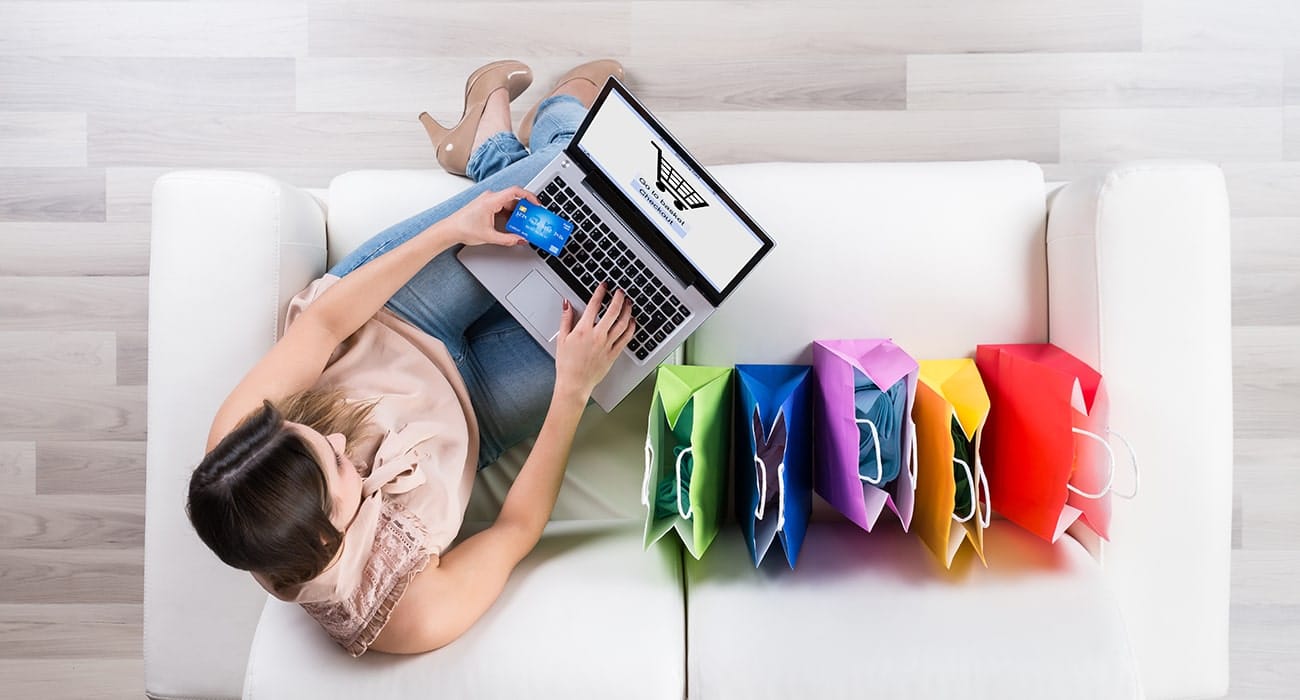Twenty years ago, a young entrepreneur told The Washington Post, “If we have 4.5 million customers, we shouldn’t have one store. We should have 4.5 million stores.” That person was Jeff Bezos, founder of Amazon, who turned his vision into one of the biggest eCommerce brands on the planet.
Even in the behemoth’s earliest days, Bezos believed personalization to be the future of online shopping. In a nutshell, eCommerce personalization is tailoring a consumer’s journey, offers and content based on their previous behaviours, demographics and personal data.
Here’s an example you may be familiar with:
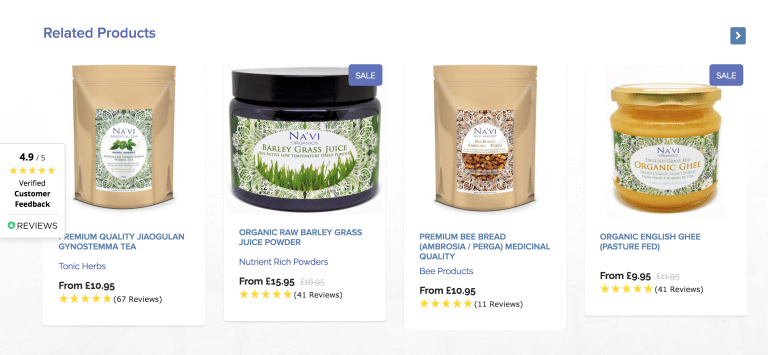
Dynamic remarketing ads are another example. While remarketing allows you to show ads to people who visited your website, dynamic remarketing takes this a step further, allowing you to show personalized ads for the exact products that previous visitors viewed on your site. Another familiar case with this touch of personalization in eCommerce is an email reminding visitors to come back to the store when they abandon a cart.
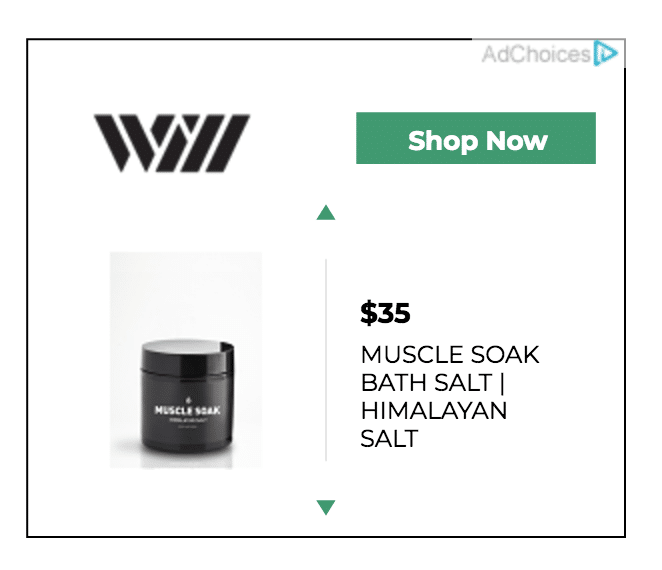
By modifying your website in real-time based on consumer behavior, you can increase your conversion rates and reduce your acquisition costs.
Before implementing eCommerce personalization, ask yourself:
- Who you are personalizing for
- What do you want to show them
- What type of impact you will expect in revenue and how to measure success
Marketing without data is like driving with your eyes closed. If you are treating every customer the same, you are leaving money on the table.
With the rise of artificial intelligence (AI) and sophisticated data analysis software, personalization is no longer exclusive to big eCommerce brands. Any online store can easily personalize their customers’ buying experience in real time based on user behavior beyond email marketing segmentation.
#1. Geo-location targeting
The internet has erased the border between countries, helping eCommerce brands reach people all around the world.
However, factor in different currencies, pricing, shipping and promotion and things start to get complicated. For instance, you don’t want to send a snowsuit promotion in euros to an Australian customer during summer.
In this example, Nordstrom redirects visitors to their Canadian store to view pricing in Canadian dollars as well as a list of stores and tailored messages.
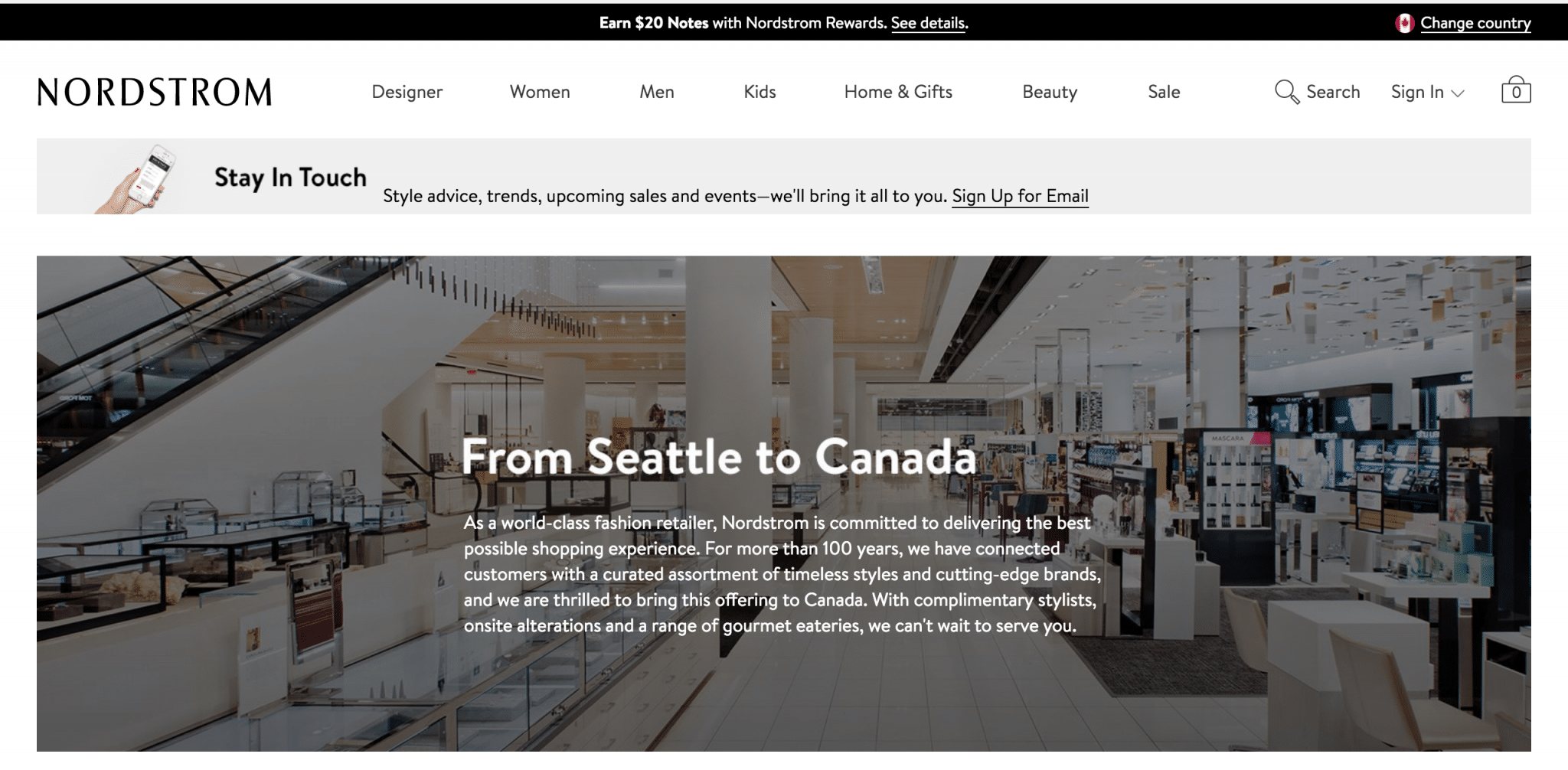
Apps such as Currency Converter Widget (WooCommerce) or Multi Currency (Shopify) enable eCommerce businesses to add multiple currencies to their shop with just a few clicks. You can also redirect visitors from specific IP addresses to custom landing pages for their country.
#2. Chatbots
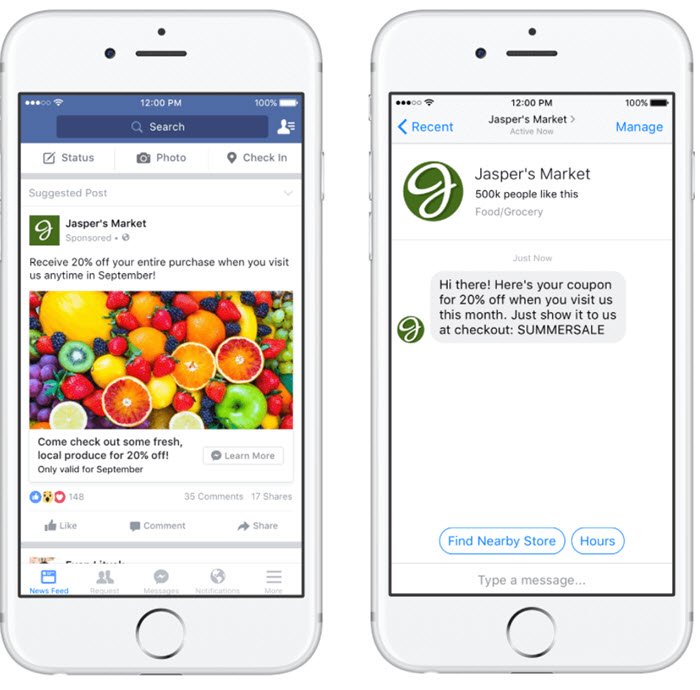
According to Facebook, 53% of people are more likely to shop with a business they can message, while 56 percent of people would rather message than call customer service.
Top eCommerce brands have started to adopt chatbots. Facebook and Telegram have already created their own and software such as Botsify, Chatfuel, ChattyPeople and MEOKAY make it easy for anyone to build a chatbot in a few simple steps.
Facebook rolled out Messenger Destination for News Feed, a new form of advertising that consumers don’t expect and have not yet developed blinders to. It allows brands to initiate a two-way conversation to learn more about current and prospective customers.
This data helps to segment the audience and improve targeted advertising targeting, which allows brands to serve more tailored and personalized ads to their target market and customers.
#3. Dynamic advertising
Targeted advertising is no longer a standalone tactic. With AI and behavioral data, marketers can now tailor ads to each consumer at the right time during their purchase journey. Some will convert with discounts; others will convert at full price if you can tell a relevant story.

One of the most obvious mistakes that eCommerce advertisers make is targeting customers who have already converted with conversion ads.
By syncing your eCommerce store and advertising platform, you can exclude any recent purchaser from your conversion funnel. This saves your marketing dollars and ensures your ads are being pushed to the right people.

Personalized advertising can also go beyond top funnel. Advertisers can leverage AI to serve retention ads based on consumer behavior.
Some people buy often, others take longer. By leveraging data, advertisers can avoid annoying customers with high-frequency ads, reduce cost per action (CPA) and increase return on ad spend (ROAS).
Here are some campaign ideas that you can easily create by leveraging custom audiences in Klaviyo or using tracking pixels.
- Winback: target customers that haven’t purchased in a while featuring popular or trending items
- Re-engage: target inactive subscribers with a relevant Facebook Ad featuring items they viewed on your site or featuring a limited-time offer promotion
- Cross-sell: target customers who bought one product (pants) with a different but complementary product (shirts)
- New customer: target those who visited your site and never purchased to encourage first-time conversions
- Cross-channel: target customers you’re already reaching by email with relevant Facebook Ads that reinforce the message and have a similar call-to-action
- Lookalike: take a VIP list or segment from Klaviyo and create a lookalike audience on Facebook to reach new leads that resemble your best customers
Lastly, you can always use geofencing or IP targeting to spotlight people based on places they have visited. This way you can target people who have been in your physical store and follow them around the internet, which helps your brand stay top of mind.
#4. Personalized content marketing promotion
63% of consumers said they would think more positively of a brand if it offered them content that was more valuable, interesting or relevant, according to Rapt Media.
That’s why 20% of content marketing is creating great content, while 80% is pushing it to the right people, at the right time, in the right place. Done well, content marketing enables eCommerce stores to push product-placement campaigns based on customer interest. Focus on your most loyal fans first through email marketing and social media. They already know your brand and will likely engage with the content. Once you gain some initial traction within your current circle, promote the content with paid ads to prospects based on their online behavior and purchase interest.
#5. Personalized video marketing
Video marketing is one of the hottest marketing trends . This year you’ll see more brands host live video to connect with consumers in real-time. Using software like Idomoo, Vocalcom and CoVideo, brands can send tailored videos in real-time to customers to address all their top pain points. This tactic has not yet been widely adopted which allows brands to stand out. Videos are tailored based on profile, historical and situational data attributes that are personalized to the individual, leveraging your CRM and data.
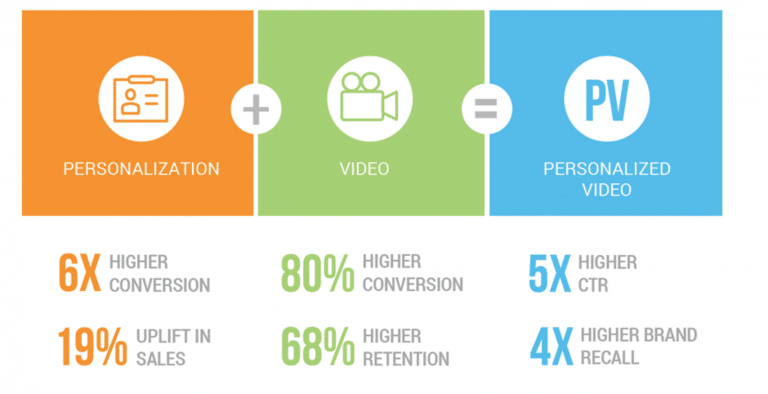
#6. Push notifications
With new competitors joining the market every day, eCommerce brands need to find new ways to grab visitors’ attention and keep them coming back. By tracking your customer’s behavior, you can send relevant push notification messages. For example, whenever your customer abandons a cart, they will immediately receive a message with a reminder or offer. You can also send a message when you have a price drop or a new promotion or when sold-out items are back in stock.
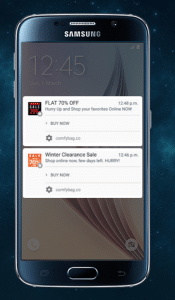
eCommerce stores are slowly adopting this strategy, so there is still time to adopt before it becomes the norm.
Here are some great apps to add push notifications to your eCommerce store: PushOwl (Shopify) Push Notifications by FirePush (Shopify) and PushAlert (WooCommerce)
#7. Create a sense of urgency
The internet allows your brand to easily reach their target audience, but it also creates a million distractions. You should try to convert customers as soon as possible before they lose interest.
For example, Leesa offers an introductory promotion with a countdown clock. Including a sense of urgency makes people feel as though they’re going to miss out on something and they will be more likely to take action for fear of losing out.
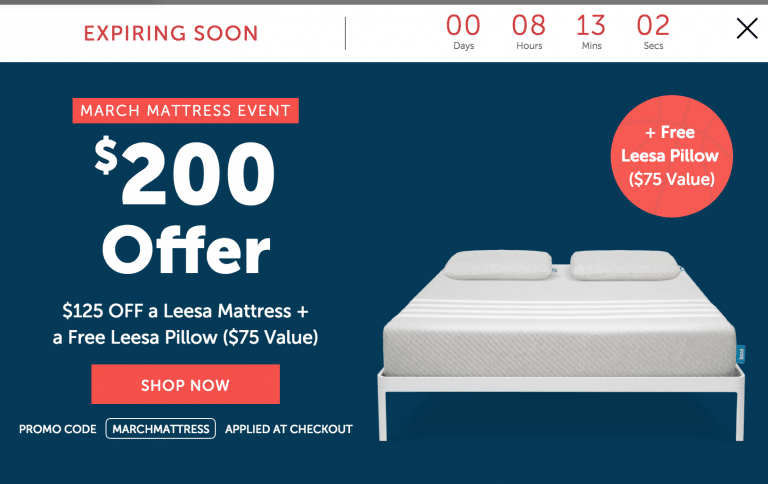
Another hot trend is capturing emails with a spinning wheel pop-up. You can layer the two trends by allowing your customers to spin a wheel to unlock a coupon and then add a sense of urgency by using a countdown feature.
Wheelio (Shopify) andWP Optin Wheel ( WooCommerce) are two examples, while there are many apps that allow you to add promotion countdowns such as Countdown Cart by Beeketing (Shopify), Sales Countdown Timer Bar (Shopify), Countdown Timer (Shopify) and WooCommerce Sales Countdown (WordPress).
Meanwhile, Facebook Countdown Retargeting by TopVid ( Shopify) will allow you to retarget your visitors with an interactive countdown timer inside a video ad.
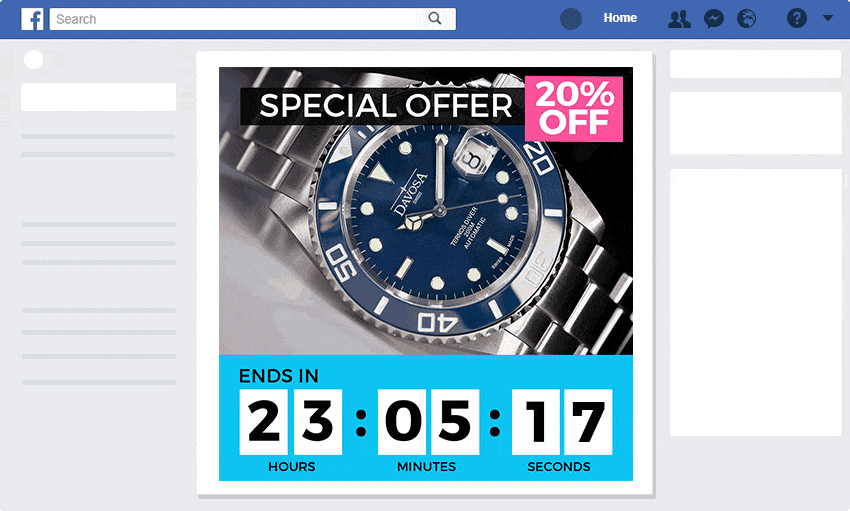
Right now is the best time to start an eCommerce store, but it is also the hardest time to grow an eCommerce store. In order to stand out, eCommerce brands can no longer treat every customer the same. The more personalized you can get, the better customer relationships you can build.
eDesk is the leading helpdesk for online sellers, purpose-built to address the precise demands of eCommerce. Sign up for a no-hassle, 14-day free trial right now and see for your yourself the difference it will make to your business.
